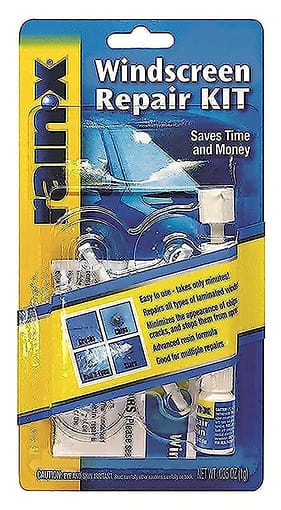So you’ve got a passion for making things with your own two hands, and you’re ready to turn that passion into a thriving business. But where do you even begin to Start A Successful DIY Business?
So you’ve got a passion for making things with your own two hands, and you’re ready to turn that passion into a thriving business. But where do you even begin? Starting a successful DIY business may seem like a daunting task, but fear not, because we’ve got you covered. This article will provide you with valuable insights and practical tips on how to navigate the exciting world of entrepreneurship, helping you transform your creative skills into a successful DIY business venture. Whether you’re into crafting, woodworking, or any other hands-on hobby, we’ve got all the advice you need to get started on your journey to business ownership. Let’s roll up our sleeves and dig in! Starting a successful DIY business can be an exciting and rewarding venture for individuals who are passionate about creating and crafting. Whether you have a specific niche in mind or are still exploring your options, it’s important to conduct proper research and planning to set yourself up for success. This article will guide you through the various steps involved in starting a successful DIY business, and provide you with valuable insights to help you make informed decisions along the way.
Research and Planning
The first step in starting any business is to identify your passion or niche. Think about what you enjoy doing and what skills or expertise you have that can translate into a product or service. This could be anything from woodworking, jewelry making, or even upcycling old furniture. By focusing on a specific niche, you can differentiate yourself in the market and target a specific audience.
Once you have determined your niche, it’s essential to conduct market research. This involves understanding your target audience, their preferences, and their purchasing behaviors. You can gather this information through online surveys, focus groups, or by studying industry reports and trends. Market research will provide you with valuable insights into the demand for your products or services and help you refine your business strategy accordingly.
Analyzing your competitors is another crucial aspect of research and planning. Take some time to study other businesses in your niche and identify what makes them successful. Look at factors such as their product offerings, pricing strategies, and marketing techniques. This information can provide you with valuable inspiration for your own business and help you identify ways to differentiate yourself from the competition.
With all the research conducted, it’s time to create a business plan. A business plan is a roadmap that outlines your objectives, strategies, and financial projections. It acts as a guide for your business and can be a useful document when seeking funding or partnerships. Your business plan should include details about your target market, marketing strategies, financial forecasts, and operational procedures. It’s important to regularly revisit and update your business plan as your business evolves.
Legal Considerations In Order To Start A Successful DIY Business.
Before launching your DIY business, there are several legal considerations you need to address. The first step is to choose a business structure. Decide whether you want to operate as a sole proprietorship, partnership, limited liability company (LLC), or corporation. Each structure has its own advantages and disadvantages, so it’s important to choose one that aligns with your business goals and priorities.
Once you have chosen a business structure, you need to register your business name. Conduct a search to ensure that the name you have chosen is not already in use. Registering your business name will protect your brand and prevent others from using the same name. The process for registering a business name varies depending on your location, so check with your local government authority for specific requirements.
In addition to registering your business name, you may also need to apply for necessary licenses and permits. This will depend on the nature of your DIY business and the regulations in your area. Examples of licenses and permits you may need include a sales tax permit, zoning permits, or health and safety certifications. Research the requirements specific to your location and ensure that you comply with all necessary regulations.
Obtaining insurance coverage is another important legal consideration. Depending on the nature of your DIY business, you may need general liability insurance, product liability insurance, or professional liability insurance. Insurance provides you with financial protection in case of accidents, damages, or legal claims. Consult with an insurance agent to determine the coverage that best suits your business needs.

Setting Up Your Workspace
Now that you have taken care of the legal considerations, it’s time to set up your workspace. Determine the specific requirements you have for your DIY business. Consider factors such as space, lighting, ventilation, and utilities. Having a dedicated workspace will not only help you stay organized but also create a conducive environment for creativity and productivity.
Next, organize your tools and equipment. Make a list of all the tools and materials you will need for your DIY projects. Invest in high-quality tools that will last and ensure that they are properly maintained. Consider setting up storage systems to keep your tools organized and easily accessible. This will save you time and effort when working on projects.
Creating an efficient layout is crucial to maximize productivity and optimize workflow. Think about the flow of your workspace and how you can arrange your tools and materials for easy access. Consider ergonomic principles to ensure that your workspace is comfortable and safe. This includes having proper lighting, comfortable seating, and good ventilation. Remember to also incorporate safety measures, such as fire extinguishers and first aid kits, to protect yourself and anyone working with you.
Sourcing Materials and Supplies
As a successful DIY business owner, sourcing materials and supplies is a critical part of your operations. Identifying reliable suppliers is key to ensuring that you have a consistent supply of quality materials. Do thorough research and consider factors such as product quality, pricing, reliability, and customer service. Building a strong relationship with your suppliers is important for long-term success and can often result in preferential treatment or discounts.
It’s crucial to source quality materials at competitive prices to maintain profitability. Compare prices from different suppliers and negotiate for better rates whenever possible. Keep in mind that cheaper is not always better, as the quality of materials can greatly impact the finished product. Strike a balance between quality and affordability to ensure customer satisfaction while maintaining healthy profit margins.
Establishing vendor relationships is also important. Communicate with your suppliers regularly and maintain open lines of communication. This is especially important for customized orders or special requests. Building a good rapport with your vendors can lead to better service, faster delivery times, and even potential collaborations or partnerships.
Maintaining inventory management is vital to ensure that you have the necessary materials on hand to fulfill orders and complete projects. Use inventory management software or spreadsheets to track your inventory levels, reordering points, and lead times. Regularly review and update your inventory to avoid stockouts or wastage. Efficient inventory management will help you streamline your operations and improve customer satisfaction.

Creating a Product Line
Now that you have your workspace set up and your materials sourced, it’s time to start creating your product line. Brainstorm ideas and concepts based on your niche and target audience. Consider what unique value you can bring to the market and how you can differentiate yourself from competitors. Think about trends and customer preferences to ensure that your product line resonates with your target market.
Once you have a few ideas, start developing prototypes. This involves creating sample products to test and evaluate their design, functionality, and overall appeal. Solicit feedback from trusted friends, family, or even potential customers to gain valuable insights and make improvements. Iterate on your prototypes until you are satisfied with the final product.
Refining your designs and functionality is an ongoing process. Continuously seek feedback from customers and make necessary adjustments based on their preferences. Keep track of industry trends and incorporate them into your product line when appropriate. By staying innovative and adaptable, you can ensure that your products remain relevant and appealing to your target market.
Testing and evaluating your products is crucial before launching them into the market. Conduct thorough quality control checks to ensure that your products meet your standards and are free from defects. Consider partnering with independent testing laboratories or certification bodies to provide third-party validation of your product’s safety or quality. Testing and evaluating your products will help you identify any areas for improvement and enhance customer satisfaction.
Branding and Marketing
Creating a strong brand identity is essential for your DIY business. Your brand is how you differentiate yourself from competitors and connect with your target audience. Start by defining your brand values and personality. Consider what emotions and messages you want to evoke in your customers. This will guide your brand identity and help you create a consistent and recognizable presence.
Design a logo and brand assets that reflect your brand values and resonate with your target market. Your logo should be simple, memorable, and easily recognizable. Use colors, typography, and imagery that align with your brand aesthetics. Consistency across all brand assets, such as packaging, business cards, and social media profiles, will help establish a strong brand identity.
Building an engaging website or online store is crucial in today’s digital age. Your website is often the first point of contact for potential customers, so it’s important to make a positive impression. Invest in a user-friendly and visually appealing website that showcases your products effectively. Include high-quality product images, detailed descriptions, and customer reviews to build trust and encourage conversions.
Developing a comprehensive marketing strategy is essential to generate awareness and drive sales for your DIY business. Identify your target market and tailor your marketing efforts to reach and engage with them effectively. Utilize a mix of online and offline marketing channels to maximize your reach. This could include social media marketing, email marketing, influencer collaborations, and participating in craft fairs or pop-up events.
Managing Finances
Managing your finances effectively is crucial for the success of your DIY business. Set up bookkeeping and accounting systems to accurately track your income and expenses. This will help you monitor your cash flow, calculate your profitability, and prepare financial statements. Consider using financial management software or hiring a professional accountant to ensure accuracy and compliance.
Prepare a budget and track your expenses to ensure that you are operating within your means. A budget will help you allocate resources effectively and identify areas where you can minimize costs or increase investments. Regularly review and update your budget as your business grows and evolves.
Explore funding options to support your DIY business if necessary. This could include self-funding, seeking loans from financial institutions, or attracting investors. Research different funding options and consider their impact on your business operations and ownership. Prepare a comprehensive business plan and financial projections to present to potential investors or lenders.
Managing your cash flow effectively is critical for the financial health of your DIY business. Monitor your cash flow closely and ensure that you have enough cash on hand to cover your expenses and investments. Implement strategies to improve your cash flow, such as offering incentives for early payments or negotiating favorable terms with your suppliers. By managing your finances diligently, you can ensure the sustainability and growth of your DIY business.
Building an Online Presence
Building an online presence is essential in today’s digital world. Utilize social media platforms to connect with your target audience and promote your DIY products or services. Identify the platforms that your target market frequents the most and focus your efforts on those. Create engaging and shareable content that showcases your products or provides value to your audience. Interact with your followers and respond to their comments or messages promptly.
Optimize your website for search engines to improve your online visibility. Conduct keyword research to identify popular search terms in your niche. Incorporate these keywords into your website content, meta tags, and headings. Create high-quality and informative content that addresses your audience’s needs and interests. Regularly update your website with fresh content to improve your search engine rankings.
Engage with online communities and forums related to your niche. Participate in discussions, answer questions, and share your expertise. This will help you establish yourself as a thought leader in your industry and drive traffic back to your website. Building relationships with influencers or bloggers in your niche can also help widen your reach and attract new customers.
Implement effective digital marketing tactics to boost your online presence. This could include paid advertising on social media or search engines, email marketing campaigns, or collaborations with influencers. Regularly analyze your marketing efforts and track key metrics to measure the effectiveness of your campaigns. Adjust your strategies as needed to optimize your return on investment.

Customer Service and Relations
Providing excellent customer service is crucial for the success and growth of your DIY business. Create a customer service policy that outlines your commitment to customer satisfaction. Train your staff, if applicable, on your customer service guidelines and ensure that they understand the importance of delivering prompt and professional support.
Responding to customer inquiries and resolving issues in a timely manner is essential. Establish multiple channels for customers to reach out to you, such as email, phone, or social media. Monitor these channels regularly and respond promptly to any queries or concerns. Personalize your responses and show genuine interest in resolving customer issues to build trust and loyalty.
Solicit customer feedback and reviews to gain valuable insights into your products and services. Encourage customers to leave reviews on your website or social media platforms. Use this feedback to improve your offerings and address any areas for improvement. Engage with your customers and show appreciation for their support. Consider offering incentives, such as discounts or loyalty programs, to encourage repeat business.
Establishing long-term relationships with your customers is key to building a loyal customer base. Stay in touch with your customers through regular communication, such as email newsletters or social media updates. Offer exclusive discounts or promotions to reward their loyalty. By nurturing these relationships, you can turn satisfied customers into brand advocates who will recommend your DIY business to others.
Continuous Learning and Growth
In the ever-changing world of DIY businesses, continuous learning and growth are essential. Stay updated on industry trends by reading industry publications, following relevant blogs or social media accounts, and attending trade shows or conferences. This will help you stay ahead of the curve and adapt your business strategy accordingly.
Attend workshops and conferences to expand your knowledge and learn new skills. Look for opportunities to enhance your craft or gain insights into business management. Networking with other DIY business owners can also be invaluable. Join industry associations or online communities to connect with like-minded individuals who can provide advice, support, and potential collaborations.
Adapt and innovate to stay competitive in the DIY market. Regularly evaluate your products, processes, and marketing strategies to identify areas for improvement. Listen to your customers’ feedback and incorporate their suggestions when appropriate. Embrace new technologies or tools that can streamline your operations or enhance your offerings. By staying agile and open to change, you can position your DIY business for continuous growth and success.
Starting a DIY business can be a challenging yet fulfilling endeavor. By following these steps and staying committed to your passion, you can turn your creative skills into a thriving business. Remember to conduct thorough research and planning, address legal considerations, set up a functional workspace, source materials efficiently, create an appealing product line, establish a strong brand presence, manage your finances diligently, build an online presence, provide exceptional customer service, and embrace continuous learning and growth. With determination and perseverance, your DIY business can thrive in the competitive marketplace.
DIY business may seem like a daunting task, but fear not, because we’ve got you covered. This article will provide you with valuable insights and practical tips on how to navigate the exciting world of entrepreneurship, helping you transform your creative skills into a successful DIY business venture. Whether you’re into crafting, woodworking, or any other hands-on hobby, we’ve got all the advice you need to get started on your journey to business ownership. Let’s roll up our sleeves and dig in! Starting a DIY business can be an exciting and rewarding venture for individuals who are passionate about creating and crafting. Whether you have a specific niche in mind or are still exploring your options, it’s important to conduct proper research and planning to set yourself up for success. This article will guide you through the various steps involved in starting a successful DIY business, and provide you with valuable insights to help you make informed decisions along the way.
Research and Planning
The first step in starting any business is to identify your passion or niche. Think about what you enjoy doing and what skills or expertise you have that can translate into a product or service. This could be anything from woodworking, jewelry making, or even upcycling old furniture. By focusing on a specific niche, you can differentiate yourself in the market and target a specific audience.
Once you have determined your niche, it’s essential to conduct market research. This involves understanding your target audience, their preferences, and their purchasing behaviors. You can gather this information through online surveys, focus groups, or by studying industry reports and trends. Market research will provide you with valuable insights into the demand for your products or services and help you refine your business strategy accordingly.
Analyzing your competitors is another crucial aspect of research and planning. Take some time to study other businesses in your niche and identify what makes them successful. Look at factors such as their product offerings, pricing strategies, and marketing techniques. This information can provide you with valuable inspiration for your own business and help you identify ways to differentiate yourself from the competition.
With all the research conducted, it’s time to create a business plan. A business plan is a roadmap that outlines your objectives, strategies, and financial projections. It acts as a guide for your business and can be a useful document when seeking funding or partnerships. Your business plan should include details about your target market, marketing strategies, financial forecasts, and operational procedures. It’s important to regularly revisit and update your business plan as your business evolves.
Legal Considerations Before Starting a Successful DIY Business.
Before launching your DIY business, there are several legal considerations you need to address. The first step is to choose a business structure. Decide whether you want to operate as a sole proprietorship, partnership, limited liability company (LLC), or corporation. Each structure has its own advantages and disadvantages, so it’s important to choose one that aligns with your business goals and priorities.
Once you have chosen a business structure, you need to register your business name. Conduct a search to ensure that the name you have chosen is not already in use. Registering your business name will protect your brand and prevent others from using the same name. The process for registering a business name varies depending on your location, so check with your local government authority for specific requirements.
In addition to registering your business name, you may also need to apply for necessary licenses and permits. This will depend on the nature of your DIY business and the regulations in your area. Examples of licenses and permits you may need include a sales tax permit, zoning permits, or health and safety certifications. Research the requirements specific to your location and ensure that you comply with all necessary regulations.
Obtaining insurance coverage is another important legal consideration. Depending on the nature of your DIY business, you may need general liability insurance, product liability insurance, or professional liability insurance. Insurance provides you with financial protection in case of accidents, damages, or legal claims. Consult with an insurance agent to determine the coverage that best suits your business needs.
Setting Up Your Workspace
Now that you have taken care of the legal considerations, it’s time to set up your workspace. Determine the specific requirements you have for your DIY business. Consider factors such as space, lighting, ventilation, and utilities. Having a dedicated workspace will not only help you stay organized but also create a conducive environment for creativity and productivity.
Next, organize your tools and equipment. Make a list of all the tools and materials you will need for your DIY projects. Invest in high-quality tools that will last and ensure that they are properly maintained. Consider setting up storage systems to keep your tools organized and easily accessible. This will save you time and effort when working on projects.
Creating an efficient layout is crucial to maximize productivity and optimize workflow. Think about the flow of your workspace and how you can arrange your tools and materials for easy access. Consider ergonomic principles to ensure that your workspace is comfortable and safe. This includes having proper lighting, comfortable seating, and good ventilation. Remember to also incorporate safety measures, such as fire extinguishers and first aid kits, to protect yourself and anyone working with you.
Sourcing Materials and Supplies
As a DIY business owner, sourcing materials and supplies is a critical part of your operations. Identifying reliable suppliers is key to ensuring that you have a consistent supply of quality materials. Do thorough research and consider factors such as product quality, pricing, reliability, and customer service. Building a strong relationship with your suppliers is important for long-term success and can often result in preferential treatment or discounts.
It’s crucial to source quality materials at competitive prices to maintain profitability. Compare prices from different suppliers and negotiate for better rates whenever possible. Keep in mind that cheaper is not always better, as the quality of materials can greatly impact the finished product. Strike a balance between quality and affordability to ensure customer satisfaction while maintaining healthy profit margins.
Establishing vendor relationships is also important. Communicate with your suppliers regularly and maintain open lines of communication. This is especially important for customized orders or special requests. Building a good rapport with your vendors can lead to better service, faster delivery times, and even potential collaborations or partnerships.
Maintaining inventory management is vital to ensure that you have the necessary materials on hand to fulfill orders and complete projects. Use inventory management software or spreadsheets to track your inventory levels, reordering points, and lead times. Regularly review and update your inventory to avoid stockouts or wastage. Efficient inventory management will help you streamline your operations and improve customer satisfaction.
Creating a Product Line
Now that you have your workspace set up and your materials sourced, it’s time to start creating your product line. Brainstorm ideas and concepts based on your niche and target audience. Consider what unique value you can bring to the market and how you can differentiate yourself from competitors. Think about trends and customer preferences to ensure that your product line resonates with your target market.
Once you have a few ideas, start developing prototypes. This involves creating sample products to test and evaluate their design, functionality, and overall appeal. Solicit feedback from trusted friends, family, or even potential customers to gain valuable insights and make improvements. Iterate on your prototypes until you are satisfied with the final product.
Refining your designs and functionality is an ongoing process. Continuously seek feedback from customers and make necessary adjustments based on their preferences. Keep track of industry trends and incorporate them into your product line when appropriate. By staying innovative and adaptable, you can ensure that your products remain relevant and appealing to your target market.
Testing and evaluating your products is crucial before launching them into the market. Conduct thorough quality control checks to ensure that your products meet your standards and are free from defects. Consider partnering with independent testing laboratories or certification bodies to provide third-party validation of your product’s safety or quality. Testing and evaluating your products will help you identify any areas for improvement and enhance customer satisfaction.
Branding and Marketing
Creating a strong brand identity is essential for your DIY business. Your brand is how you differentiate yourself from competitors and connect with your target audience. Start by defining your brand values and personality. Consider what emotions and messages you want to evoke in your customers. This will guide your brand identity and help you create a consistent and recognizable presence.
Design a logo and brand assets that reflect your brand values and resonate with your target market. Your logo should be simple, memorable, and easily recognizable. Use colors, typography, and imagery that align with your brand aesthetics. Consistency across all brand assets, such as packaging, business cards, and social media profiles, will help establish a strong brand identity.
Building an engaging website or online store is crucial in today’s digital age. Your website is often the first point of contact for potential customers, so it’s important to make a positive impression. Invest in a user-friendly and visually appealing website that showcases your products effectively. Include high-quality product images, detailed descriptions, and customer reviews to build trust and encourage conversions.
Developing a comprehensive marketing strategy is essential to generate awareness and drive sales for your DIY business. Identify your target market and tailor your marketing efforts to reach and engage with them effectively. Utilize a mix of online and offline marketing channels to maximize your reach. This could include social media marketing, email marketing, influencer collaborations, and participating in craft fairs or pop-up events.
Managing Finances
Managing your finances effectively is crucial for the success of your DIY business. Set up bookkeeping and accounting systems to accurately track your income and expenses. This will help you monitor your cash flow, calculate your profitability, and prepare financial statements. Consider using financial management software or hiring a professional accountant to ensure accuracy and compliance.
Prepare a budget and track your expenses to ensure that you are operating within your means. A budget will help you allocate resources effectively and identify areas where you can minimize costs or increase investments. Regularly review and update your budget as your business grows and evolves.
Explore funding options to support your DIY business if necessary. This could include self-funding, seeking loans from financial institutions, or attracting investors. Research different funding options and consider their impact on your business operations and ownership. Prepare a comprehensive business plan and financial projections to present to potential investors or lenders.
Managing your cash flow effectively is critical for the financial health of your DIY business. Monitor your cash flow closely and ensure that you have enough cash on hand to cover your expenses and investments. Implement strategies to improve your cash flow, such as offering incentives for early payments or negotiating favorable terms with your suppliers. By managing your finances diligently, you can ensure the sustainability and growth of your DIY business.
Building an Online Presence
Building an online presence is essential in today’s digital world. Utilize social media platforms to connect with your target audience and promote your DIY products or services. Identify the platforms that your target market frequents the most and focus your efforts on those. Create engaging and shareable content that showcases your products or provides value to your audience. Interact with your followers and respond to their comments or messages promptly.
Optimize your website for search engines to improve your online visibility. Conduct keyword research to identify popular search terms in your niche. Incorporate these keywords into your website content, meta tags, and headings. Create high-quality and informative content that addresses your audience’s needs and interests. Regularly update your website with fresh content to improve your search engine rankings.
Engage with online communities and forums related to your niche. Participate in discussions, answer questions, and share your expertise. This will help you establish yourself as a thought leader in your industry and drive traffic back to your website. Building relationships with influencers or bloggers in your niche can also help widen your reach and attract new customers.
Implement effective digital marketing tactics to boost your online presence. This could include paid advertising on social media or search engines, email marketing campaigns, or collaborations with influencers. Regularly analyze your marketing efforts and track key metrics to measure the effectiveness of your campaigns. Adjust your strategies as needed to optimize your return on investment.

Customer Service and Relations
Providing excellent customer service is crucial for the success and growth of your DIY business. Create a customer service policy that outlines your commitment to customer satisfaction. Train your staff, if applicable, on your customer service guidelines and ensure that they understand the importance of delivering prompt and professional support.
Responding to customer inquiries and resolving issues in a timely manner is essential. Establish multiple channels for customers to reach out to you, such as email, phone, or social media. Monitor these channels regularly and respond promptly to any queries or concerns. Personalize your responses and show genuine interest in resolving customer issues to build trust and loyalty.
Solicit customer feedback and reviews to gain valuable insights into your products and services. Encourage customers to leave reviews on your website or social media platforms. Use this feedback to improve your offerings and address any areas for improvement. Engage with your customers and show appreciation for their support. Consider offering incentives, such as discounts or loyalty programs, to encourage repeat business.
Establishing long-term relationships with your customers is key to building a loyal customer base. Stay in touch with your customers through regular communication, such as email newsletters or social media updates. Offer exclusive discounts or promotions to reward their loyalty. By nurturing these relationships, you can turn satisfied customers into brand advocates who will recommend your DIY business to others.
Continuous Learning and Growth
In the ever-changing world of DIY businesses, continuous learning and growth are essential. Stay updated on industry trends by reading industry publications, following relevant blogs or social media accounts, and attending trade shows or conferences. This will help you stay ahead of the curve and adapt your business strategy accordingly.
Attend workshops and conferences to expand your knowledge and learn new skills. Look for opportunities to enhance your craft or gain insights into business management. Networking with other DIY business owners can also be invaluable. Join industry associations or online communities to connect with like-minded individuals who can provide advice, support, and potential collaborations.
Adapt and innovate to stay competitive in the DIY market. Regularly evaluate your products, processes, and marketing strategies to identify areas for improvement. Listen to your customers’ feedback and incorporate their suggestions when appropriate. Embrace new technologies or tools that can streamline your operations or enhance your offerings. By staying agile and open to change, you can position your DIY business for continuous growth and success.
Starting a DIY business can be a challenging yet fulfilling endeavor. By following these steps and staying committed to your passion, you can turn your creative skills into a thriving business. Remember to conduct thorough research and planning, address legal considerations, set up a functional workspace, source materials efficiently, create an appealing product line, establish a strong brand presence, manage your finances diligently, build an online presence, provide exceptional customer service, and embrace continuous learning and growth. With determination and perseverance, your DIY business can thrive in the competitive marketplace.












